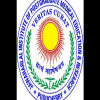How to become a Radiologic Technologist
Overview, Courses, Exam, Colleges, Pathways, Salary

Overview
Who is Radiologic Technologist ?
A radiologic technologist is a skilled healthcare professional specializing in medical imaging procedures. They play a crucial role in the diagnosis and treatment of various medical conditions by capturing images of a patient's internal structures using advanced imaging equipment. Radiologic technologists work closely with radiologists, physicians, and other healthcare professionals to ensure accurate and high-quality diagnostic images.
These professionals are well-trained in operating a range of imaging technologies, including X-ray machines, computed tomography (CT) scanners, magnetic resonance imaging (MRI) scanners, and ultrasound equipment. They follow strict safety protocols to protect both themselves and the patients from unnecessary radiation exposure.
In addition to operating the equipment, radiologic technologists are responsible for positioning patients correctly, applying radiation shielding as needed, and maintaining detailed records of procedures performed. They also assist in the administration of contrast agents to enhance the visibility of specific body structures during certain imaging procedures.
Radiologic technologists must possess strong technical skills, attention to detail, and the ability to provide compassionate care to patients.
They work in various healthcare settings, such as hospitals, clinics, imaging centers, and physician offices. With their expertise in medical imaging, radiologic technologists play a vital role in aiding physicians in diagnosing and treating illnesses, ultimately contributing to the overall well-being of patients.
Typical day at work
What does Radiologic Technologist do?
- Operating Imaging Equipment: Radiologic technologists are proficient in operating various imaging technologies, such as X-ray machines, CT scanners, MRI scanners, and ultrasound equipment. They ensure the equipment is functioning properly and capture high-quality images of the patient's internal structures.
- Positioning and Preparing Patients: Technologists position patients correctly to obtain the necessary images. They explain procedures, address any concerns, and ensure patient comfort. They may also apply radiation shielding or protective measures when needed.
- Imaging Procedure Execution: Technologists follow the physician's orders and protocols to perform specific imaging procedures. They may adjust imaging parameters, position equipment, and capture images from different angles to obtain comprehensive diagnostic information.
- Radiation Safety: Radiologic technologists adhere to strict safety protocols to minimize radiation exposure risks. They utilize shielding devices and ensure that patients and themselves are protected during imaging procedures.
- Collaboration and Communication: Technologists work closely with radiologists, physicians, and other healthcare professionals. They provide them with accurate and detailed images, discuss patient histories, and collaborate in developing appropriate imaging strategies.
- Record-Keeping: Technologists maintain detailed records of imaging procedures, patient information, and any specific observations during the process. Accurate documentation is essential for continuity of care and effective communication within the healthcare team.
- Patient Care and Support: Technologists demonstrate compassion, empathy, and professionalism when interacting with patients. They address patient concerns, offer reassurance, and maintain a safe and comfortable environment throughout the imaging process.
Abilities and Aptitude needed
What are the skills, abilities & aptitude needed to become Radiologic Technologist?
- Technical Proficiency: Radiologic technologists must have a strong understanding of medical imaging equipment and techniques. They should be proficient in operating X-ray machines, CT scanners, MRI scanners, and other imaging technologies, as well as be knowledgeable about image processing and manipulation.
- Knowledge of Anatomy and Physiology: A solid understanding of human anatomy and physiology is crucial for accurately positioning patients, selecting appropriate imaging protocols, and identifying abnormalities or irregularities in the images.
- Attention to Detail: Radiologic technologists must possess a keen eye for detail to ensure that images are of high quality and diagnostic value. They should be meticulous in positioning patients, adjusting equipment settings, and capturing images from the correct angles.
- Radiation Safety: Proficiency in radiation safety practices is essential. Technologists need to follow strict protocols to protect patients and themselves from unnecessary radiation exposure. They should be knowledgeable about radiation shielding, equipment calibration, and proper use of radiation safety measures.
- Communication and Interpersonal Skills: Radiologic technologists interact with patients of various backgrounds and may need to explain procedures, answer questions, and provide emotional support. Strong communication and interpersonal skills help in building rapport and ensuring patient comfort.
- Problem-Solving and Critical Thinking: Technologists encounter a variety of patient conditions and imaging challenges. They must possess excellent problem-solving skills to adjust imaging techniques, troubleshoot equipment issues, and obtain accurate images for diagnostic interpretation.
- Physical Stamina: The role of a radiologic technologist often involves prolonged periods of standing, moving heavy equipment, and assisting patients who may have limited mobility. Physical stamina and the ability to handle the physical demands of the job are important.
- Professionalism and Ethics: Radiologic technologists must adhere to professional standards, ethics, and patient confidentiality. They should demonstrate empathy, respect, and maintain a high level of professionalism in all aspects of their work.
Pathways
How to become an Radiologic Technologist?
Entrance Exam
Entrance Exam for Radiologic Technologist ?
Courses
Which course I can pursue?
Best Colleges
Which are the best colleges to attend to become an Radiologic Technologist?
Industries
Which Industries are open for Radiologic Technologist?
- Hospitals: Hospitals are the primary employers of radiologic technologists. They have radiology departments where technologists perform a wide range of imaging procedures, including X-rays, CT scans, MRI scans, and more.
- Diagnostic Imaging Centers: These specialized centres focus on providing imaging services to patients on an outpatient basis. Radiologic technologists play a crucial role in operating imaging equipment and capturing high-quality images.
- Physician Offices: Many medical practices, including those of radiologists, orthopaedic surgeons, and other specialists, have their imaging equipment. Radiologic technologists are employed to perform imaging procedures and assist with patient care in these settings.
- Urgent Care Centers: Urgent care centres often have on-site radiology facilities to diagnose and treat acute injuries and illnesses. Radiologic technologists in these settings perform X-rays and other imaging procedures to support the urgent care team.
- Research and Development: Some radiologic technologists work in research and development institutions or pharmaceutical companies. They may be involved in conducting clinical trials, developing imaging techniques, or testing new medical imaging equipment.
- Educational Institutions: Radiologic technologists can work in colleges, universities, or vocational schools as instructors or clinical educators. They train and educate future radiologic technologists, sharing their knowledge and expertise.
- Mobile Imaging Services: Some radiologic technologists work for mobile imaging companies that provide imaging services on-site at various locations, such as nursing homes, assisted living facilities, or sports events.
- Government and Military Healthcare Facilities: Radiologic technologists can find opportunities within government-run healthcare facilities, including military hospitals and clinics, where they contribute to the healthcare needs of service members and their families.
internship
Are there internships available for Radiologic Technologist?
Internships for radiologic technologists typically take place in hospitals, diagnostic imaging centers, or other healthcare facilities with radiology departments. During the internship, students work under the guidance and supervision of experienced technologists and gain exposure to various imaging modalities and procedures.
Internships offer several benefits to aspiring radiologic technologists:
- Practical Experience: Internships provide the opportunity to practice and refine skills learned in the classroom. Students get to work with actual patients, operate imaging equipment, and collaborate with healthcare professionals.
- Professional Networking: Internships allow students to build relationships and connections within the healthcare industry. They have the opportunity to interact with experienced technologists, radiologists, and other healthcare professionals, which can be valuable for future job prospects.
- Exposure to Diverse Cases: Internships offer exposure to a wide range of patient cases, which helps students develop their critical thinking and problem-solving skills. They gain experience in adapting imaging techniques to different patient populations and clinical scenarios.
- Career Exploration: Internships provide firsthand experience of the daily responsibilities and challenges faced by radiologic technologists. This exposure helps students confirm their career choice and understand the specific areas of radiology they may be interested in pursuing further.
To secure an internship, students typically apply through their radiologic technology program or directly to healthcare facilities that offer internship opportunities. It is important to check the specific requirements and application process of each program or institution, as they may have their own selection criteria and deadlines.
Career outlook
What does the future look like for Radiologic Technologist?
The future outlook for radiologic technologists is promising. The demand for medical imaging services continues to grow due to an aging population and advancements in diagnostic imaging technology. This, coupled with an increasing focus on early detection and prevention, is expected to drive job opportunities for radiologic technologists. Additionally, expanding healthcare facilities, the need for specialized imaging in various medical fields, and the retirement of experienced technologists contribute to a favorable job market. Continuous professional development and specialization in areas like MRI or CT can further enhance career prospects for radiologic technologists.




.webp)


